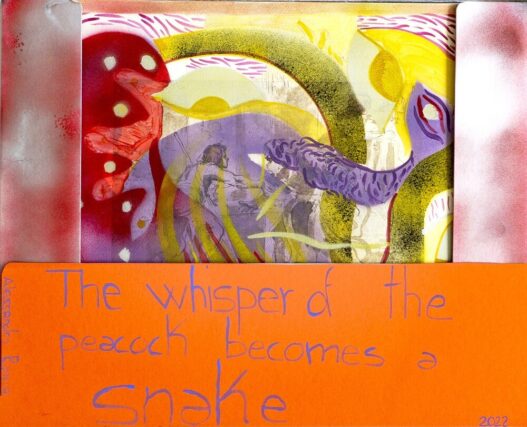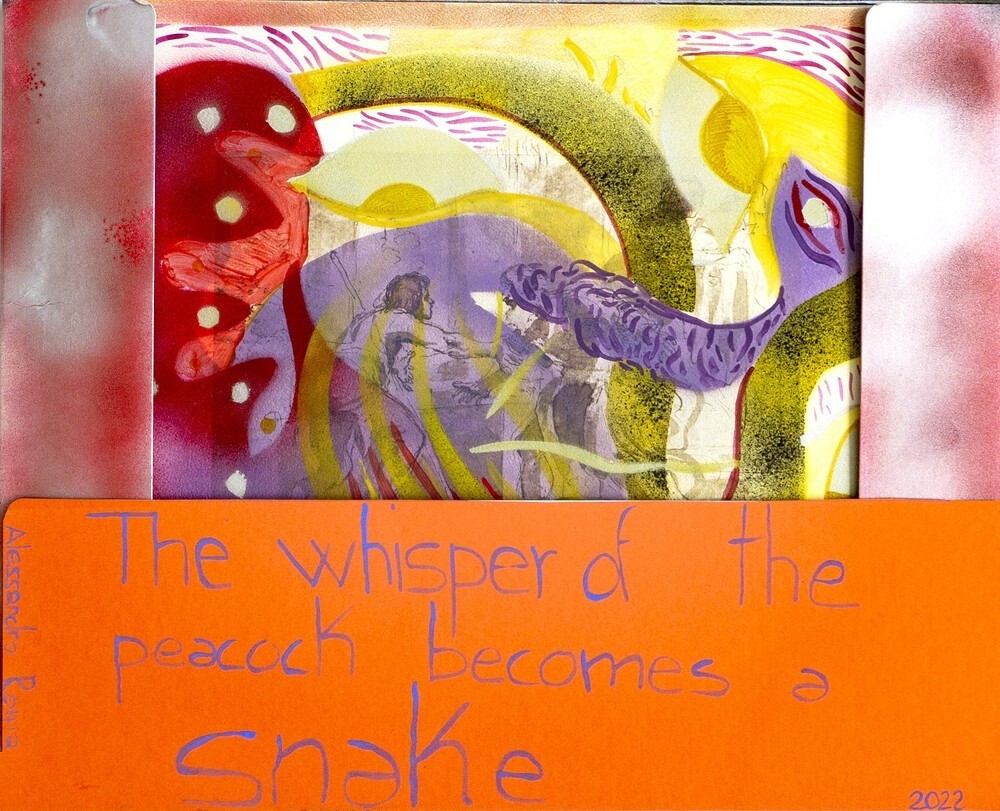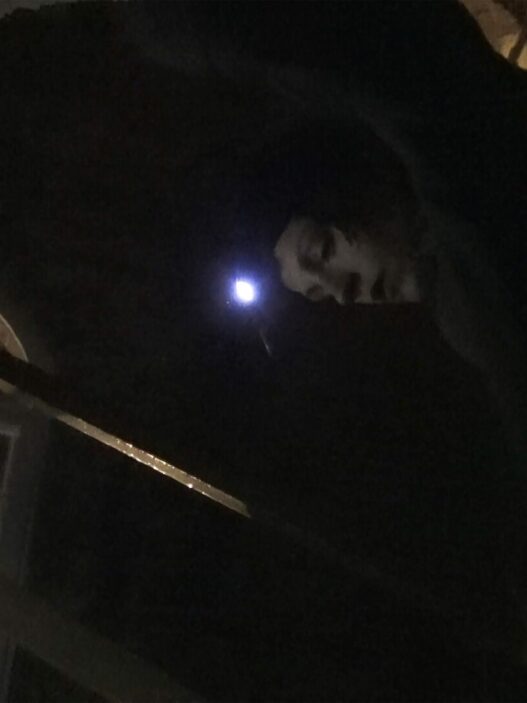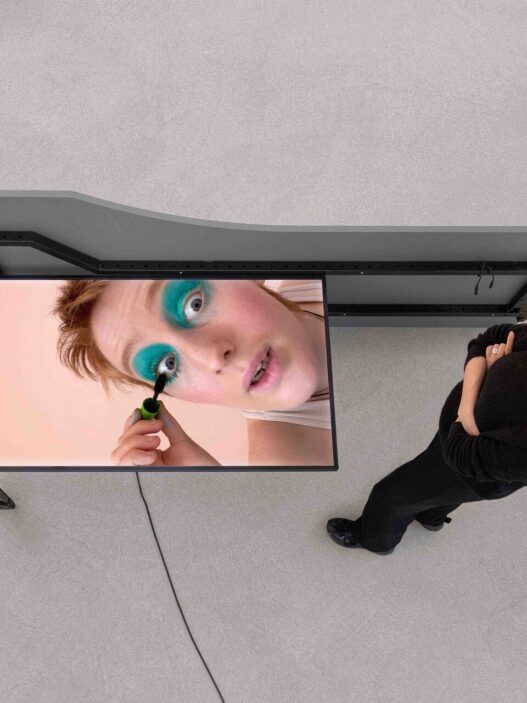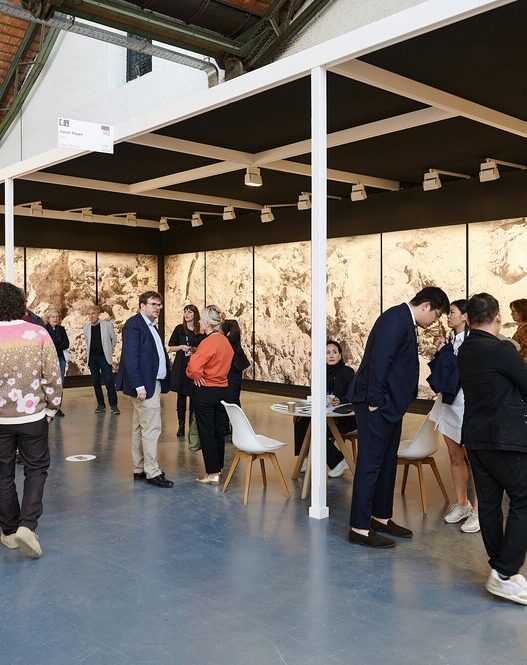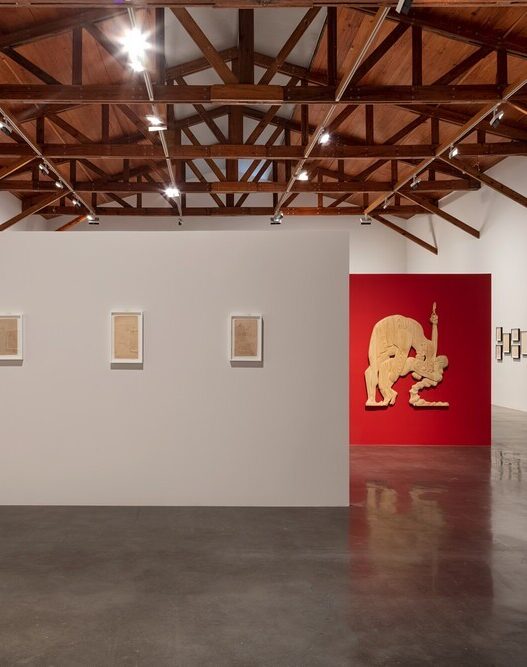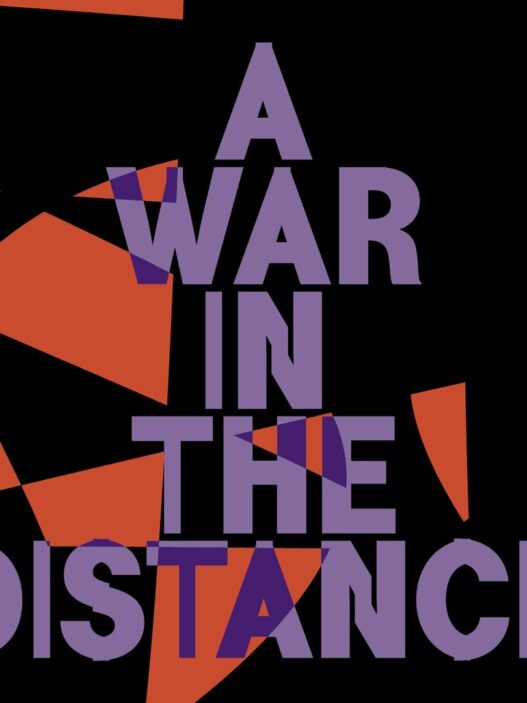September 12–October 22, 2022
Quartz Studio is pleased to present The whisper of the peacock becomes a snake, the first solo show in Turin by Alessandro Roma (Milan, Italy, 1977) with a critical text by Irina Zucca Alessandrelli.
“I remember my childhood names for grasses and secret flowers. I remember where a toad may live and what times the birds awaken in the summer—and what trees and seasons smelled like.” –John Steinbeck, East of Eden (1952)
The solo exhibition by Alessandro Roma is an ode to daydreaming amid rich, vibrant nature, inviting us to get lost and rediscover ourselves again. The animal and plant kingdoms are deeply intertwined and appear as one, welcoming guests and pointing them in the direction of a floral fantasy with a peacock feather. Two enormous canvases, a ceramic object, and a woodcut print make up the entire exhibition, which focuses on forms that change from amphibians to birds and back again.
The unframed paintings present a sort of ouroboros, a serpent that changes into and swallows a peacock, the emblem of eternal life, which is replicated in a seductive cosmogony of purple and green colors.
The two canvases appear to be a single world that has been momentarily divided in two when they are placed together like Renaissance tapestries.
The ceramic object, which would be reductively referred to as a vase, and the print, which is a woodcut from three plates engraved on linoleum, are entirely coherent with the visual picture from which they appear to have sprung. The poster, which is framed on wood and colored porcelain and contains a dominant color scheme of dark purple and lemon yellow, alludes to the aesthetics of early 20th-century German avant-garde movements but in a softer, more feminine form. The ceramic sculpture is strong, using the same color palette as the previous pieces but in softer, more subdued tones. This sculpture rises from a circular base and appears to be a trunk covered in huge leaves and flowers. Jagged indigo bushes emerge from inside that invite touch with their smooth, glittering outside rainbow shell. Subtle elegance and harmony of the sense reigns, bringing to the mind the scent of fresh flowering woods, gently rippled by the wind.
This synesthetic composition suggests a world of fully realized creative values, such as a fondness for human dexterity and artisanal skills that appreciate paper texture, tempera’s effect on rough canvas, and glaze’s effect on milky pottery. Roma employs methods that evoke long-forgotten but highly prized abilities, recreating for the eye and the viewers the joy of the hand that forms, paints, and engraves.
When we look at these pieces, we can hear the peacock rustling amongst the branches and see light refractions between the boughs, sensing the spiritual unity of creation, whose essence the artist has attained.
Living and working in Faenza and London, Alessandro Roma was born in Milan, Italy, in 1977. He received his degree from Milan’s Accademia di Belle Arti di Brera. His early work and academic schooling, which primarily uses pictures, have influenced the way he approaches his work today. Recently, Roma has experimented with several different methods, such as casting, fabric printing, ceramics, and collage. This has resulted in an entirely new collection of internal landscapes that are the result of his imagination as well as real-life experiences and literary sources, making them accessible and tangible to the viewers. Selected solo exhibitions include: Keiko Yamamoto Rochaix Gallery, London, UK (2020); Foundation Thalie, Brussels, Belgium (2019); MIC International Museum of Ceramics, Faenza, Italy (2018); Casa Museo Jorn, Albissola, Italy (2018); Z2o Sara Zanin, Rome, Italy (2018); Yamamoto Keiko Rochaix, London, UK (2017); Museum Villa Croce, Genoa, Italy (2016); MAC Museum of Contemporary Art, Lissone, Italy (2014); Paradise Row Gallery, London, UK (2013); Brand New Gallery, Milan, Italy (2012); MART Contemporary Art Museum, Rovereto, Italy (2011); Galerie Alexandra Saheb, Berlin, Germany (2011); Scaramouche Gallery, New York, US (2011). Selected group shows include: Fittile, Triennale Milano, Italy (2021); Dentro/Fuori, Carlo Zauli Museum, Faenza, Italy (2021); Chang-4, Casa Testori, Novate Milanese, Italy (2020), Archaeological Museum Salinas, Palermo (2019); Biennale internationale de céramique contemporaine, Vallauris, France (2019); Drawing Room, London, UK (2015), Corvi Mora, Greengrassi, London, UK (2014), Artists Space, New York (2014), Marianne Boesky, New York, US (2012); Lorcan O’Neill, Rome, Italy (2012); Prague Biennial, Prague, Czech Republic (2009); Museo de Belles Artes de Castellon, Spain (2007). The artist is represented by Keiko Yamamoto Rochaix Gallery, London, UK.
Irina Zucca Alessandrelli is an art historian and the curator of the Collezione Ramo of Italian drawing from the 20th and 21st centuries in Milan. She wrote the Drawing section for Artissima 2022 as well as Italian Drawing of the Twentieth Century, Milan (2018).
Quartz Studio
Via Giulia di Barolo, 18/D
10124 Turin
Italy
T +39 338 429 0085
F +39 011 826 4640
info@quartzstudio.net
www.quartzstudio.net
Facebook / Instagram









